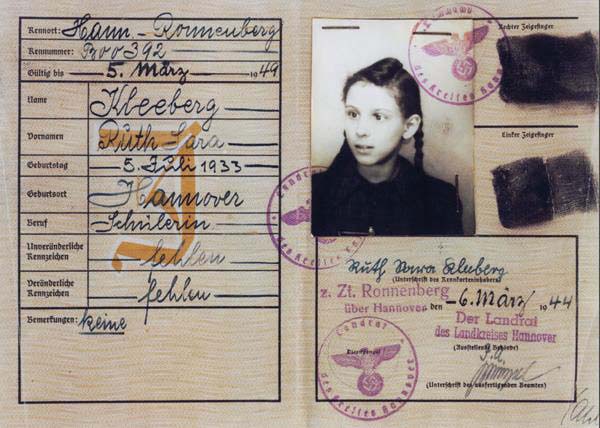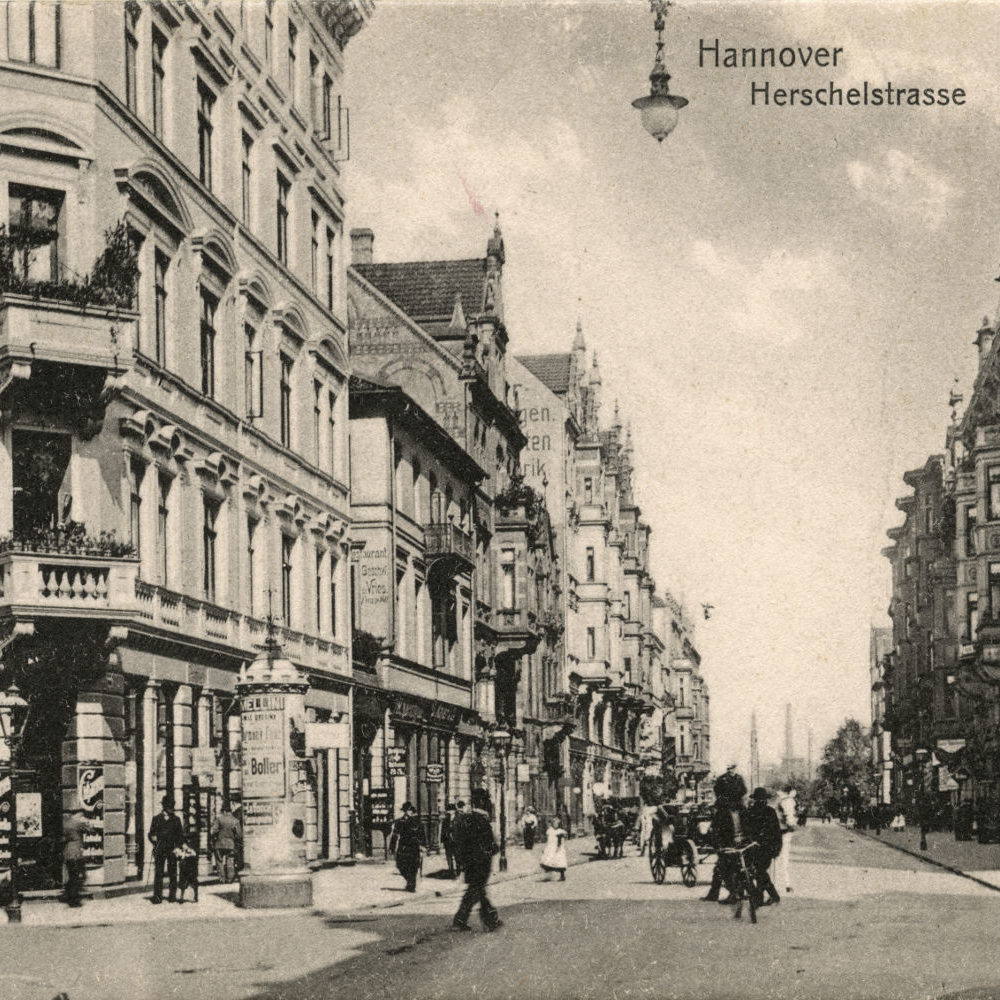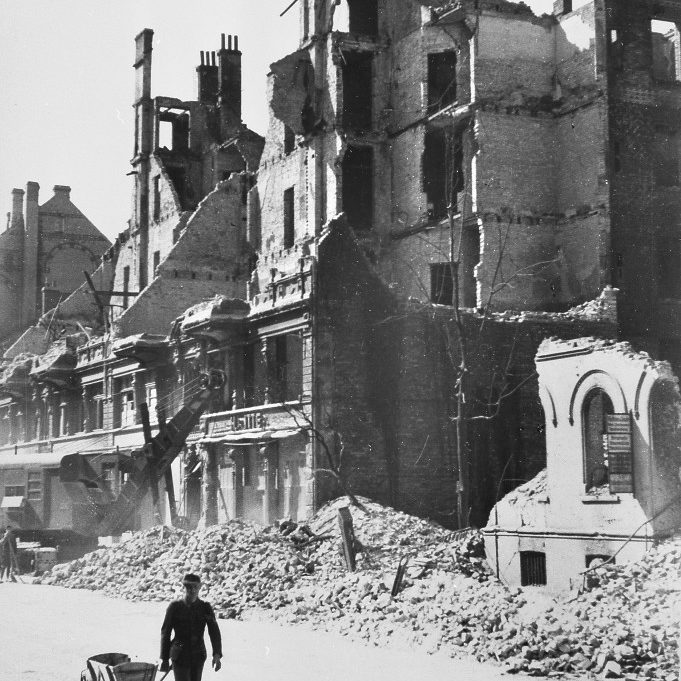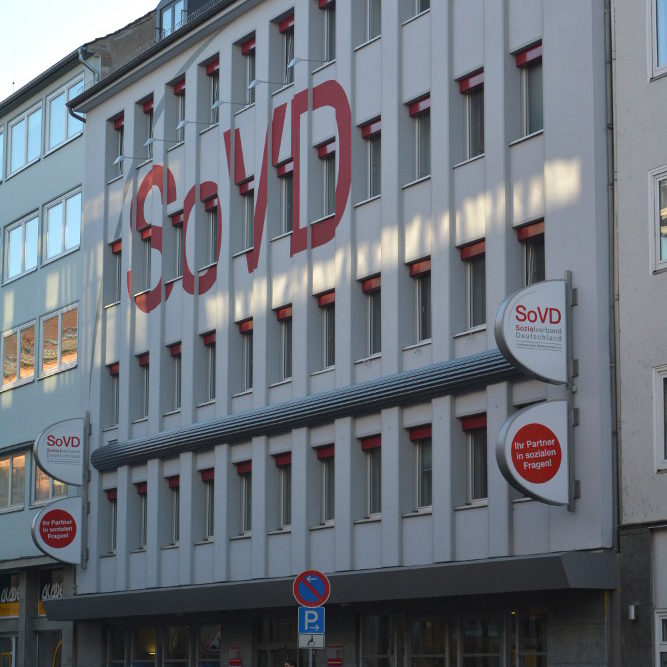Forced to move house: following a directive from the city authorities on 3 September 1941, more than 1200 Jewish citizens in Hanover had to leave their homes within the space of a few hours. They were forced to move into 15 “Jewish houses” dotted around the city. One of these was the residential building at Herschelstrasse 31.

“Aktion Lauterbacher”, the Lauterbacher Campaign
For each person, they are allowed to take with them one bed, one chest of drawers and one chair, some bedlinen, a few items of clothing and crockery, in other words just what will fit within the allotted three square metres [roughly 32.3 square feet]. All the belongings left behind in their homes are taken by the Gestapo to the city’s collection points. The aim is to concentrate Jews in just a few locations in order to have total control over them before their planned deportation to the ghettos and death camps of Eastern Europe. In charge of planning is the NSDAP [Nationalsozialistische Deutsche Arbeiterpartei, i.e. the National Socialist German Workers’ Party or Nazi Party] regional administration under Gauleiter [regional leader] Hartmann Lauterbacher. For this reason, the expulsion is named after him: “Aktion Lauterbacher”, the Lauterbach Campaign.
Fifteen Jewish houses around the city
Houses owned privately by Jews and public facilities belonging to the Jewish community in Hanover are designated as “Jewish houses”: old people’s homes, hospitals, schools, even a cemetery hall are used. Conditions in these enforced living quarters are inhumane. Men, women and children, crammed into the tiniest of spaces, desperately try to maintain some small sense of privacy by hanging up blankets and sheets.
Night-time raids
During the day the residents have to work as forced labour in Hanover’s factories, while at night there is a strict curfew. It is for this reason that Gestapo officials routinely enter homes at night to conduct roll calls and carry out raids. There are also beatings and sexual assaults committed by the men, who are often drunk.
The story of a child from a “mixed marriage”
The “Jewish houses” in Hanover’s inner centre in particular are victims of the raids – including the house at Herschelstrasse 31. At the beginning of December 1941, approximately 150 Jewish tenants are forced into living here. After the first deportation from Hanover on 15 December 1941, their number drops to 60 to 70 people. These consist mostly of married couples in “mixed marriages” who are each allocated one room. Among them is an 11-year-old girl Ruth Kleeberg with her Jewish father and Christian mother. During the major bombing raid of October 1943, they take refuge in a nearby railway subway, thereby managing to save their own lives.
Murdered just before the end of the war
After escaping from the burning house, the Kleeberg family flees to the site of the former Israelite Horticultural School Ahlem where other “mixed-marriage” couples live. Mother and daughter witness the liberation of Hanover here on 10 April 1945. The Jewish father is arrested in the late autumn of 1944 charged with “crimes against the wartime economy” – he had sifted soil for cereal grains for his pet rabbits. He then spends nine weeks in the Gestapo prison in Ahlem, a few metres away from his family. On 5 February 1945, Erich Kleeberg is deported from here to Neuengamme concentration camp in Hamburg. He dies shortly before the end of the war in Sandbostel camp near Bremervörde.
Additional online information
Wikipedia entry: Jewish house [in German]
Wikipedia entry Mixed marriage (National Socialism) [in German]
h1 | Hanover television on Youtube: Ruth Gröne – Portrait of a Contemporary Witness of the National Socialist Era [in German with auto-generated English subtitles in Settings]
Further reading: Click herel
Texts and images: Michael Pechel



